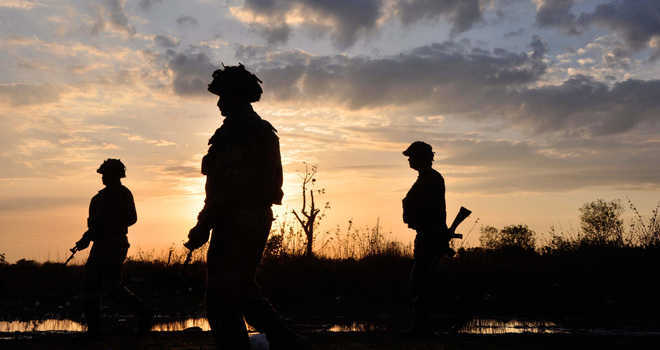
Raj Kadyan
THE runway at Agartala had a general east-west alignment before 1947. After the creation of erstwhile East Pakistan, the border ran west of the airfield. Resultantly, the aircraft had to cross over the border. To avoid this, another runway was constructed parallel to the border. My company had been deployed to guard the airfield since mid-November 1971. On our west was Chandpur village, occupied by the enemy. The area was thickly wooded. Around 7.30 pm on December 3, the field telephone in my bunker rang. It was urgent summons from the battalion headquarters. Shortly, a jonga with headlights off halted at the end of the runway and I was off. Having told us that Pakistanis had attacked our western airfields, the Commanding Officer tasked my company to capture Chandpur the next morning. It was past 10 pm when I got back. I called my order group to issue necessary instructions. Bhawani Singh, all of 22, was my quiet companion. He must have possessed sixth sense. By the time I returned to the bunker around midnight, he had cleaned my carbine, checked magazines for ammunition, primed two grenades and ensured their safety pins were in place. My field upholstery was laid out neatly; a bottle had been filled with water. He ensured that my identity discs were worn on my person. In one corner, was his own kit in complete readiness. He brewed tea on the stove and gave it to me in a mug. Free of these worries, my mind went over operational details. We spoke little. Before withdrawing to his nearby dug-out, he quietly reminded me to write a letter to the family. I also told him to write to his parents; he was to be married in three months. At the crack of dawn, on December 4, we launched the attack. Bhawani was next to me, carrying the radio set. Many lives and limbs were lost but we managed to capture the objective and began to reorganise to face a possible counter attack. Bhawani and I dug a 30-inch trench and crouched in it with our weapons. We remained under shelling throughout the day and continued to suffer casualties. At dusk there was a call from the battalion headquarters wanting to know the map reference of our position. The map was with the mortar officer, some 30 ft away in his trench. Bhawani volunteered to fetch it. He had hardly gone halfway when a shell landed near our trench throwing mud all over. I heard his groan. I jumped out and rushed to him. He was hit in the chest by a huge splinter; his entrails were out. I took his head in my lap and shouted for the stretcher bearers. Four of them from the medical platoon were the only medical help. They came quickly, but Bhawani was gone — the 10th casualty of the day. Tears welled up in my eyes on the loss of a close companion, a comrade-in-arms. In military glossary definition he was an orderly. In common parlance, he was a sahayak.
